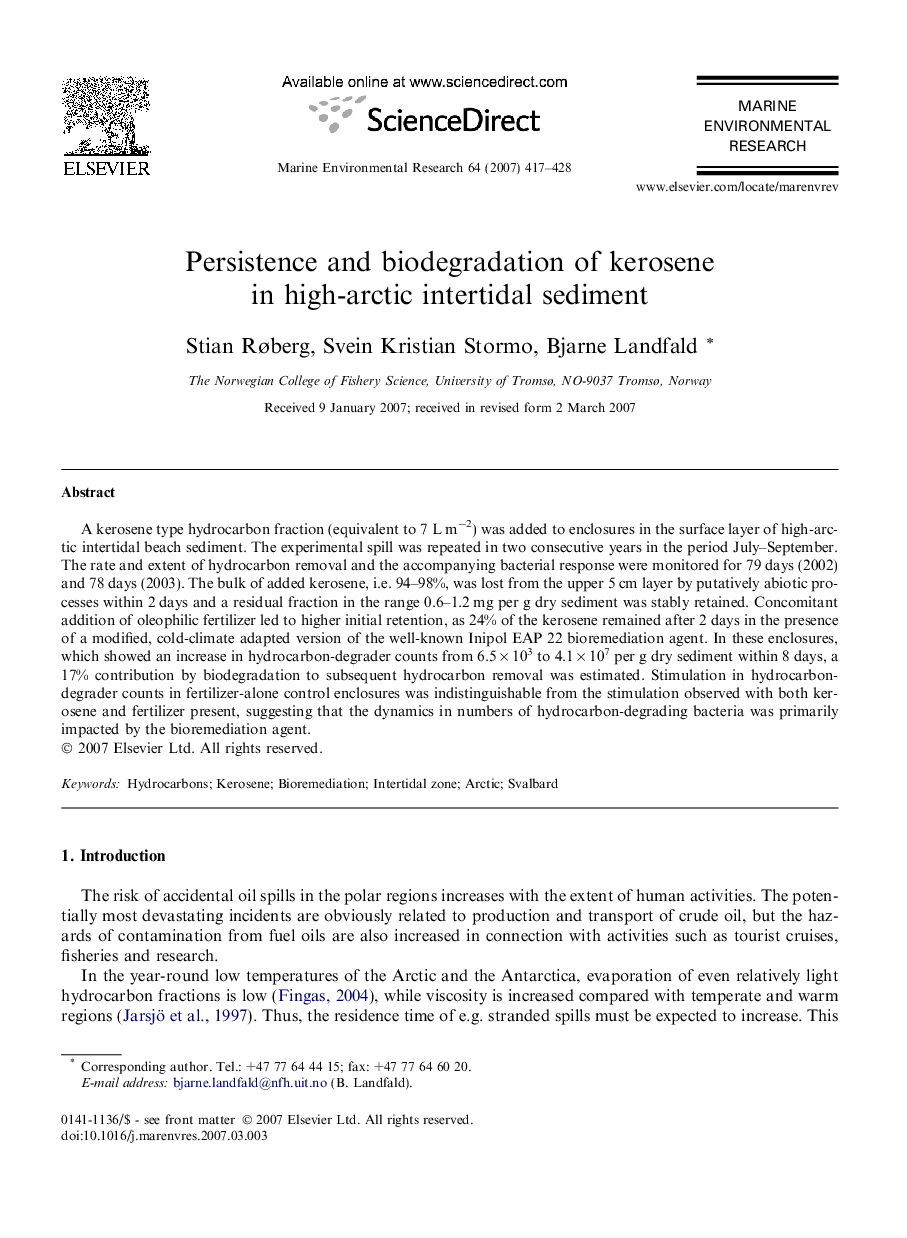| Article ID | Journal | Published Year | Pages | File Type |
|---|---|---|---|---|
| 4551853 | Marine Environmental Research | 2007 | 12 Pages |
Abstract
A kerosene type hydrocarbon fraction (equivalent to 7Â LÂ mâ2) was added to enclosures in the surface layer of high-arctic intertidal beach sediment. The experimental spill was repeated in two consecutive years in the period July-September. The rate and extent of hydrocarbon removal and the accompanying bacterial response were monitored for 79Â days (2002) and 78Â days (2003). The bulk of added kerosene, i.e. 94-98%, was lost from the upper 5Â cm layer by putatively abiotic processes within 2Â days and a residual fraction in the range 0.6-1.2Â mg per g dry sediment was stably retained. Concomitant addition of oleophilic fertilizer led to higher initial retention, as 24% of the kerosene remained after 2Â days in the presence of a modified, cold-climate adapted version of the well-known Inipol EAP 22 bioremediation agent. In these enclosures, which showed an increase in hydrocarbon-degrader counts from 6.5Â ÃÂ 103 to 4.1Â ÃÂ 107 per g dry sediment within 8Â days, a 17% contribution by biodegradation to subsequent hydrocarbon removal was estimated. Stimulation in hydrocarbon-degrader counts in fertilizer-alone control enclosures was indistinguishable from the stimulation observed with both kerosene and fertilizer present, suggesting that the dynamics in numbers of hydrocarbon-degrading bacteria was primarily impacted by the bioremediation agent.
Related Topics
Physical Sciences and Engineering
Earth and Planetary Sciences
Oceanography
Authors
Stian Røberg, Svein Kristian Stormo, Bjarne Landfald,
